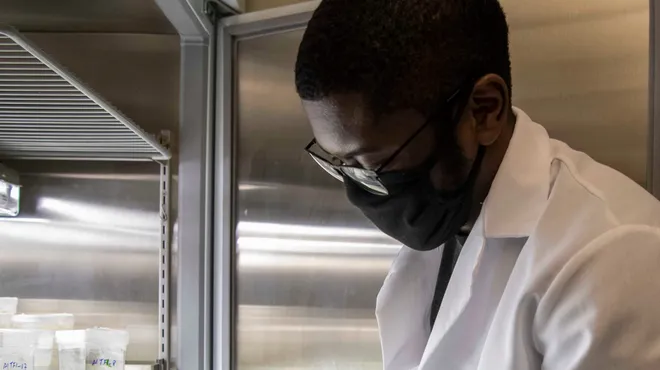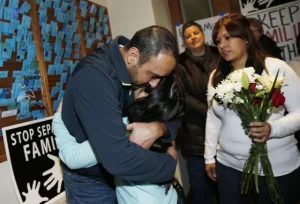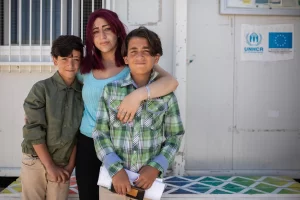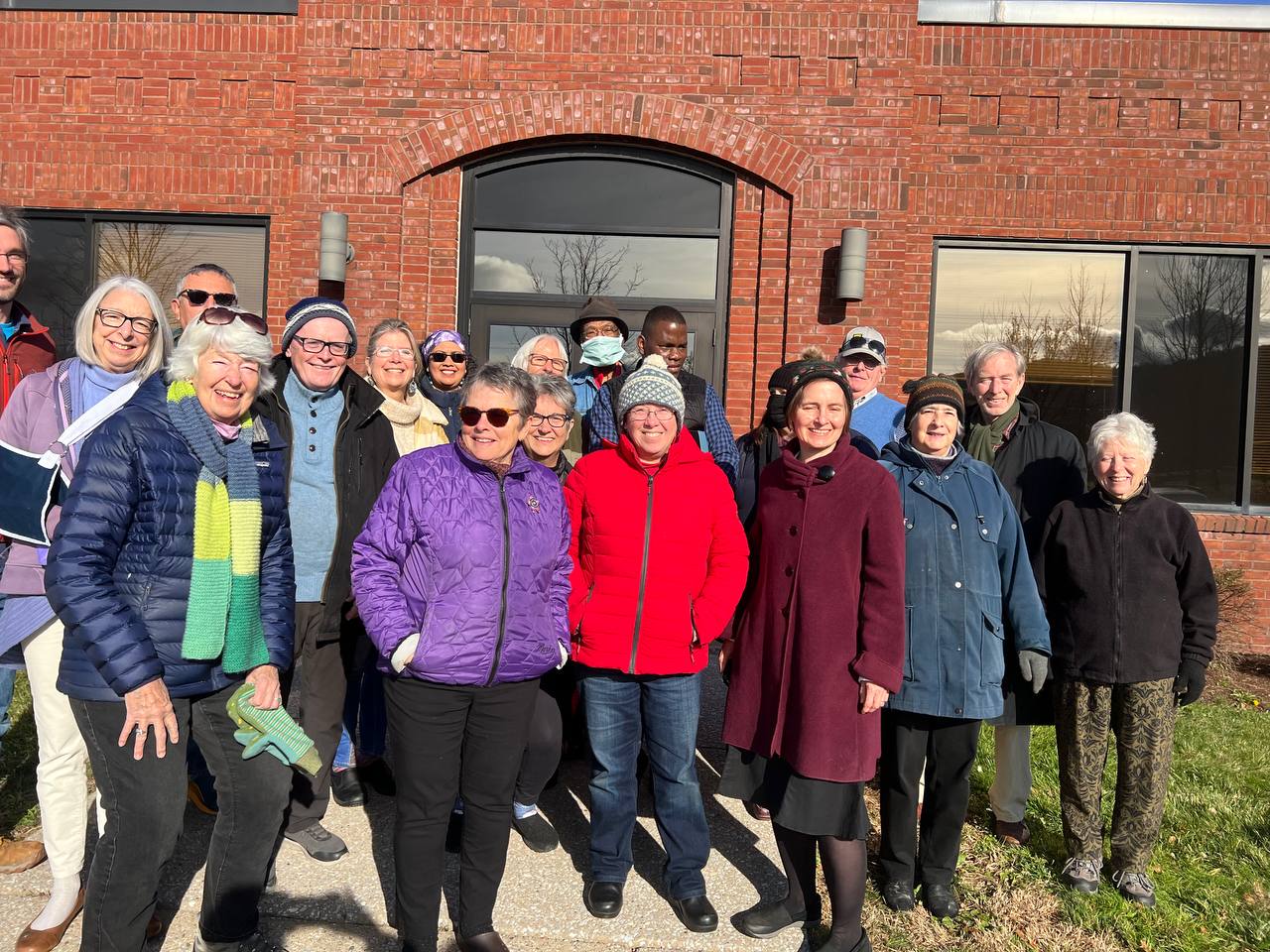On a special episode (first released on June 20, 2024) of The Excerpt podcast: With the advent of CRISPR as a gene editing technology, there are new opportunities to develop breakthrough treatments that weren’t possible before. Could this be a turning point that revolutionizes how doctors treat some of the biggest medical challenges, while also being a more effective and cheaper solution for the patient? Shengdar Q. Tsai, associate member and principal investigator of the Department of Hematology at St. Jude Children’s Research Hospital, joins The Excerpt to talk about how this new technology could shape the future of medicine.
=
Dana Taylor:
Hello and welcome to The Excerpt. I’m Dana Taylor. Today is Thursday, June 20th, 2024, and this is a special episode of The Excerpt. With the advent of CRISPR as a gene-editing technology, there are new opportunities to develop breakthrough treatments that weren’t possible before. Could this be a turning point that revolutionizes how doctors treat some of the biggest medical challenges while also being a more effective and cheaper solution for the patient. Here to tell us about his work in genome editing and how could shape the future of medicine is Shengdar Tsai, associate member and principal investigator of the Department of Hematology at St. Jude Children’s Research Hospital. Thanks for being on The Excerpt, Shengdar.
Shengdar Tsai:
Sure thing. It’s great to be here.
Dana Taylor:
What is CRISPR and can you explain how it’s being used in new ways to treat disease?
Shengdar Tsai:
CRISPR stands for Clustered Regularly Interspaced Short Palindromic Repeats. I know it’s a mouthful. So CRISPR is a method for genome editing. It allows you to change the DNA in living cells. And one of the reasons why everyone’s really excited about CRISPR technologies is the fact that it can be programmed with a short RNA molecule. So this is a short nucleic acid like DNA, and so it means that you could basically very rapidly edit new sites in the genome to treat disease.
Dana Taylor:
Get the Daily Briefing newsletter in your inbox.
The day’s top stories, from sports to movies to politics to world events.
Delivery: DailyYour Email
Well, typically therapies would need to happen outside the body. Gene editing inside the body or in vivo is now an achievable goal. Could you explain more about what this type of gene editing is?
Shengdar Tsai:
Yes. Typically, we would edit cells ex vivo. So that means you basically isolate the patient’s cells and then you manufacture them, so this might be something like a hemato stem cell or blood stem cell, and then put them back into the patient. In in vivo genome editing therapies the editor is the drug, and so you’d basically inject a genome editor into the blood using something like lipid nanoparticles. So this would be something that is a component, for example the COVID vaccine, so everyone has gotten things like this before, and it would edit cells inside the body rather than editing cells outside.
Dana Taylor:
How is this kind of gene editing impacting patients?
Shengdar Tsai:
Yeah. So the first CRISPR genome editing therapy has been approved. This is called exa-cell. It’s a treatment by editing these blood stem cells for treating sickle cell disease. And so it’s pretty exciting that this first genomic medicine has been approved. It works by inducing fetal hemoglobin as a replacement for defective sickle beta globin as a treatment for this genetic disorder.
Dana Taylor:
And then what are the risks that are involved in these kinds of therapies?
Shengdar Tsai:
I think one concern is the unintended off target activity of these editors, so the potential that they might edit somewhere else in the genome. My group and others have developed a number of different methods for understanding the global activities of these editors, and so a lot is being done to try to ensure that these treatments are safe.
Dana Taylor:
Some are concerned that research into existing genome information is not diverse enough to help all types of people, different races for instance. How is that being addressed and considered when moving forward with this technology?
Shengdar Tsai:
Yeah, I think that’s a great question. I think one of the important areas to think about is how individual genetic variation affects the genome-wide activity of these genome editors. So this is work that my group and many others have been working on. I think we want to understand if you have a genetic variant that, for example, overlaps in off-target site, how does that impact the efficacy of that treatment? So we know that everyone has millions of different genetic variants. This is what makes us different or unique as people. And so when we think about genome editing, it’s possible that everyone’s genome is a little bit different. How does that affect or alter the global genome editing activity?
Dana Taylor:
And then I want to talk about what you do, the kind of work that you’re doing at St. Jude to develop biomedical research and therapeutic applications.
Shengdar Tsai:
So my work at St. Jude focuses on advancing genome technologies and therapies. We work in three main areas. One is understanding the safety or global activity of these editors. Another is protein engineering to improve versions of genome editors. And the third is translational applications in trying to bring these therapies to patients for conditions like sickle cell disease and bone marrow failure disorders. We’ve recently been working on a pretty exciting blue sky project here at St. Jude also, called Paradigm, focused on bringing genome editing to individualized patient therapy. So trying to correct these patients specific disease specific mutations.
Dana Taylor:
Yeah, I did want to specifically ask you about the goals of that Paradigm program.
Shengdar Tsai:
Yeah, so I think that we and many others have been really excited about cheetham editing therapies. And I think one aspect is the idea that these CRISPR enzymes can be very easily programmed to target new sites, and in principle correct patient specific mutations. I think one of the challenges is advancing these in a personalized way. I think that we’ve all been very excited about, for example, the CRISPR therapeutics therapy, but that’s where one common genetic mutation. And so how can we get to a future where we have routine personalized genome editing therapies. And so that’s, I think, the real goal of this project to bring these types of genetic medicines to patients at St. Jude.
Dana Taylor:
How are AI and machine learning being incorporated into this technology?
Shengdar Tsai:
Yeah. So I think one of the aspects is that we want to basically very quickly predict the safety and efficacy of genome editing across many different targets. I think one idea is if you can understand the global activities of these editors, if you can generate large scale data that you might be able to train machine learning predictors to accurately predict how safe and effective a genome editor might be. And so that’s one of the goals of this Paradigm project as well.
Dana Taylor:
Are there other applications for CRISPR and genetic engineering beyond just medicinal uses that could be impactful to society? And are there some concerning areas like potentially creating a market for designer babies?
Shengdar Tsai:
Yeah. I think the concern about designer babies definitely a concern. I think as you know, I think scientists came together and advocated for a global moratorium. And so I want to be very clear that the genome editing that we’re talking about for therapies here is in the context of somatic cells. And so everyone that is serious about this effort is very careful about making sure that there’s no unintended [inaudible 00:07:10] line editing or the creation of so-called designer babies. So this is an issue that’s important, but important to clarify that that’s not related to the therapies that we’re discussing here.
Dana Taylor:
I’m going to ask you to take us into the future a little bit. What does a timeline for using this technology really look like?
Shengdar Tsai:
Well, I think CRISPR genome editors are here as therapeutics right now. I’m also co-chair of an antisemitic sub genome editing consortium that’s really focused on advancing this towards in vivo genome editing. I see many different clinical trials happening right now and many more happening over the next several years. So I think that there’s going to be a massive growth in the number of these therapies that we’ll see over the next several years.
Dana Taylor:
Well finally, and I’m just going to pin you down on this, what excites you the most about the future of this technology?
Shengdar Tsai:
I think the possibility that you could take a person’s disease causing mutation and correct it back to its natural state and really have an impact on patients. I think that’s a really amazing possibility for the future.
Dana Taylor:
It’s fascinating information. Thank you so much for joining us Shengdar.
Shengdar Tsai:
Great. Thank you very much.
Dana Taylor:
Author:: Bagombeka Job
CREDIT:: USA TODAY











































